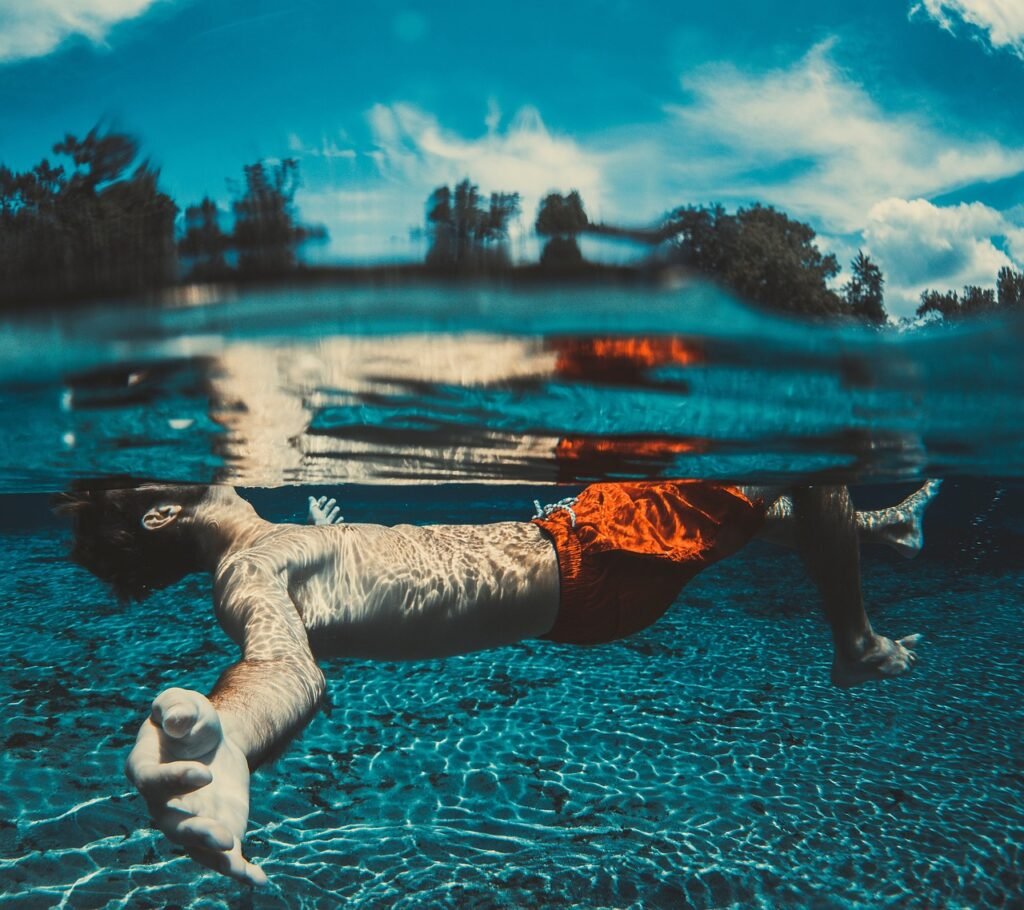Welcome to the exciting world of swimming! In this article, you will learn about the beginner lessons available for all age groups to help you swim like a pro in no time. Whether you’re a child eager to conquer the pool or an adult looking to improve your skills, there are programs tailored just for you. With the guidance of experienced instructors and a supportive environment, you’ll be gliding through the water with confidence and grace in no time. Dive in and start your swimming journey today! Have you ever wanted to become a strong swimmer but didn’t know where to start? Whether you’re a child, teenager, adult, or senior citizen, it’s never too late to learn how to swim like a pro! In this article, you will find beginner swimming lessons tailored to all age groups, making it easy and fun for you to dive into the water and become a confident swimmer. Let’s get started on your swimming journey!

This image is property of pixabay.com.
Importance of Learning to Swim
Learning how to swim is not only a fun and enjoyable activity, but it also carries numerous benefits for your physical and mental well-being. By becoming a proficient swimmer, you can improve your cardiovascular health, increase muscle strength, and enhance flexibility. Swimming is a low-impact exercise that is gentle on your joints, making it suitable for people of all ages and fitness levels. The sense of accomplishment and confidence that comes with mastering swimming skills can boost your self-esteem and improve your overall quality of life.
Stay Active and Healthy
Swimming is a fantastic way to stay active and engage in physical exercise without putting too much strain on your body. Whether you’re looking to lose weight, build muscle, or improve your cardiovascular endurance, swimming can help you achieve your fitness goals. The resistance provided by the water challenges your muscles and helps tone your body, while the rhythmic movements of swimming can create a meditative experience that reduces stress and boosts your mood.
Safety in and Around Water
One of the most crucial reasons to learn how to swim is for your safety in and around water. Drowning is a leading cause of accidental death worldwide, and knowing how to swim can significantly reduce the risk of water-related incidents. By learning basic swimming and water safety skills, you can protect yourself and others in emergency situations. Whether you’re at the beach, pool, or lake, being a confident swimmer gives you the ability to navigate the water safely and respond effectively in case of emergencies.
Starting Your Swimming Journey
If you’re new to swimming or haven’t been in the water for a while, the idea of diving in can be intimidating. However, with the right mindset, instruction, and practice, you can quickly develop the skills needed to swim like a pro. Whether you’re a child, teenager, adult, or senior, there are beginner swimming lessons tailored to your age group that can help you build a strong foundation in swimming techniques. Let’s explore some tips and strategies for starting your swimming journey based on your age group.
Children
For children, learning how to swim is not only a valuable life skill but also a fun and exciting activity that can instill confidence and promote physical fitness. Swimming lessons for children typically focus on water safety, basic swimming strokes, and building comfort in the water. Many swimming programs offer lessons for children as young as six months old, where they can learn fundamental skills in a safe and supportive environment.
It’s essential for children to feel comfortable and relaxed in the water before learning swim strokes. Encouraging your child to play games and explore the water with toys can help them become familiar with the aquatic environment. Floatation devices such as arm floats or swim vests can provide added security and buoyancy as children develop their swimming skills.
Swimming instructors use engaging and interactive teaching methods to make learning to swim enjoyable for children. Through games, songs, and storytelling, children can develop confidence in the water and acquire essential swimming techniques. Instructors often focus on skills such as floating, kicking, and arm movements to help children progress from basic water acclimation to more advanced strokes.
Teenagers
Teenagers who are new to swimming or want to improve their skills can benefit from beginner swimming lessons that cater to their age group. Teenagers often have the physical strength and coordination needed to learn more advanced swimming techniques, making it easier for them to progress in their swimming abilities. Whether you’re a teenager who is just starting to swim or looking to refine your strokes, swim lessons can help you build endurance, improve technique, and enhance your overall swimming performance.
Teenagers may feel self-conscious or nervous about swimming, especially in a group setting. It’s essential to create a supportive and encouraging environment where teenagers can feel confident and motivated to learn. Instructors who understand the unique needs and challenges of teenagers can help create a positive swimming experience that fosters skill development and self-confidence.
Swimming lessons for teenagers often focus on refining stroke techniques, increasing endurance, and introducing more advanced skills such as flip turns and dives. By practicing drills and exercises tailored to their skill level, teenagers can improve their speed, efficiency, and overall swimming proficiency. Instructors may also incorporate video analysis and feedback to help teenagers identify areas for improvement and track their progress over time.
Adults
It’s never too late to learn how to swim or improve your swimming skills as an adult. Whether you’re a beginner adult swimmer or someone who wants to refine their strokes, there are swimming lessons designed specifically for adults of all ages and abilities. Learning to swim as an adult can be a rewarding experience that offers numerous health benefits, boosts confidence, and opens up opportunities for aquatic activities such as triathlons, open water swimming, and water aerobics.
Adult beginners may feel apprehensive about swimming, especially if they have had negative experiences with water in the past. It’s important for adult learners to approach swimming with an open mind, patience, and a willingness to learn. Finding a supportive and experienced swimming instructor who can tailor lessons to your individual needs and comfort level is essential for building confidence and progressing in your swimming abilities.
Swimming lessons for adults often focus on water safety, basic swimming techniques, and stroke development. Instructors may start with basic skills such as floating, kicking, and breathing before progressing to more advanced strokes such as freestyle, backstroke, breaststroke, and butterfly. Adult learners can benefit from individualized instruction, feedback, and practice drills that help them overcome challenges, refine their technique, and build endurance in the water.
Seniors
Swimming is an excellent form of exercise for seniors that offers numerous health benefits, including improved cardiovascular fitness, muscle strength, and joint flexibility. Whether you’re a senior who is new to swimming or someone who wants to maintain and enhance your swimming skills, there are swimming lessons tailored to your age group that can help you stay active, healthy, and engaged in aquatic activities.
Seniors may have unique physical considerations and mobility limitations that can impact their ability to swim. It’s essential for senior swimmers to consult with their healthcare provider before starting a swimming program to ensure that they can safely participate in aquatic activities. Swimming instructors who are experienced in working with seniors can provide adaptive techniques, modifications, and support to help seniors feel comfortable and confident in the water.
Swimming lessons for seniors focus on gentle and low-impact exercises that promote cardiovascular health, muscle toning, and joint mobility. Instructors may emphasize water safety, balance, and coordination skills to help seniors navigate the water effectively and reduce the risk of falls. Seniors can enjoy the therapeutic benefits of swimming, such as stress reduction, pain relief, and improved mental well-being, while building strength, flexibility, and endurance through regular aquatic exercise.

This image is property of pixabay.com.
Essential Swimming Techniques
No matter your age or swimming experience, mastering essential swimming techniques is key to becoming a confident and proficient swimmer. Whether you’re learning how to float, kick, breathe, or perform strokes, practicing these fundamental skills will help you build a strong foundation in swimming and improve your overall aquatic performance. Let’s explore some essential swimming techniques that beginners of all ages can practice to enhance their swimming abilities.
Floating
Floating is a fundamental skill that every swimmer should learn, as it helps you stay buoyant and relaxed in the water. Whether you’re on your back or stomach, knowing how to float can conserve energy, reduce fatigue, and provide a sense of security while swimming. Beginners can practice floating by lying flat on the water’s surface, relaxing their body, and focusing on their breathing to stay afloat.
Instructors may teach beginners how to perform a back float and a front float to enhance their floating skills. By keeping their head back, chest up, and limbs extended, swimmers can achieve a streamlined position that reduces drag and promotes balance in the water. Floating is an essential survival skill that can help swimmers conserve energy and stay afloat in emergency situations, making it a valuable technique for beginners of all ages.
Kicking
Kicking is an essential component of swimming that propels you forward, stabilizes your body, and enhances your overall swimming speed. Whether you’re performing a flutter kick, dolphin kick, or breaststroke kick, mastering proper kicking technique can significantly improve your swimming performance. Beginners can practice kicking by using a kickboard or pool noodle for support, focusing on generating power from their hips and engaging their legs from their thighs to their feet.
Instructors may teach beginners how to perform different types of kicks depending on the stroke they are learning. Freestyle and backstroke often utilize a flutter kick, where swimmers kick their legs in an alternating motion to create propulsion. Breaststroke uses a frog kick, where swimmers bring their heels toward their buttocks and then push their legs out in a circular motion to move forward. By practicing kicking drills and exercises, swimmers can develop leg strength, coordination, and endurance that contribute to efficient swimming technique.
Breathing
Proper breathing technique is essential for swimmers to maintain endurance, rhythm, and relaxation in the water. Whether you’re inhaling, exhaling, or holding your breath during swimming strokes, mastering breathing skills can enhance your performance and comfort in the water. Beginners can practice breathing exercises by blowing bubbles, exhaling underwater, and turning their head to the side to take a breath while swimming.
Instructors may teach beginners how to coordinate their breathing with their arm strokes and body rotation to optimize their swimming efficiency. In freestyle and backstroke, swimmers often exhale underwater and inhale to the side when their arm is recovering out of the water. Breaststroke and butterfly require swimmers to exhale while their face is in the water and inhale as they lift their head to breathe. By practicing breathing rhythm and coordination, swimmers can enhance their lung capacity, relaxation, and overall swimming performance.
Swimming Strokes
Swimming strokes are the different styles of arm and leg movements that swimmers use to propel themselves through the water. Whether you’re learning freestyle, backstroke, breaststroke, or butterfly, each stroke has its unique technique, rhythm, and efficiency that contribute to your overall swimming ability. Beginners can practice swimming strokes by breaking down the movements into individual components, such as arm pulls, leg kicks, and body positioning, to master the coordination and timing required for each stroke.
Instructors may teach beginners how to perform each swimming stroke step by step, focusing on proper body alignment, technique, and breathing. Freestyle, also known as front crawl, involves an alternating arm pull, flutter kick, and rhythmic breathing that propels swimmers forward efficiently. Backstroke uses a continuous arm pull, flutter kick, and coordinated rotation of the body to move backward comfortably. Breaststroke utilizes a simultaneous arm pull, frog kick, and glide phase that provides swimmers with stability and rhythm in the water. Butterfly involves a double arm pull, dolphin kick, and undulating body motion that creates a powerful and dynamic swimming technique.
Turn and Wall Techniques
Mastering turn and wall techniques is essential for swimmers to navigate the pool efficiently, maintain momentum, and optimize their performance during races or lap swimming. Whether you’re executing a flip turn, open turn, or push off the wall, understanding how to approach, execute, and streamline these techniques can make a significant difference in your swimming speed and efficiency. Beginners can practice turn and wall techniques by rehearsing the movements outside of the water, visualizing the steps, and gradually incorporating them into their swimming routine.
Instructors may teach beginners how to perform flip turns in freestyle and backstroke, where swimmers approach the wall, do a somersault, and push off in a streamlined position to initiate their next lap. Open turns involve touching the wall with both hands, rotating, and pushing off the wall with a single arm to continue swimming. Pushing off the wall with a streamlined body position is crucial for maintaining speed and reducing resistance underwater. By practicing turn and wall techniques with proper body alignment, timing, and power, swimmers can improve their lap times, efficiency, and overall swimming performance in the pool.
Swimming Tips and Tricks
As you embark on your swimming journey and begin practicing essential swimming techniques, keep in mind these helpful tips and tricks to enhance your swimming experience, build confidence, and achieve your swimming goals. Whether you’re a beginner swimmer or a seasoned aquatic enthusiast, incorporating these strategies into your training routine can elevate your swimming abilities and make you feel like a pro in the water.
Set Realistic Goals
Setting realistic and achievable swimming goals can help you stay motivated, focused, and committed to improving your skills in the water. Whether you want to swim a certain distance, master a specific stroke, or participate in a swimming event, having clear objectives can guide your training, track your progress, and celebrate your accomplishments along the way. Start small, set milestones, and gradually challenge yourself to reach new heights in your swimming journey.
Practice Consistently
Consistency is key to developing strong swimming skills, improving technique, and building endurance in the water. Whether you swim daily, several times a week, or on a specific schedule, establishing a regular practice routine can help you refine your strokes, enhance your swimming performance, and maintain your fitness level. By prioritizing swimming practice and making it a part of your weekly routine, you can progress steadily, overcome challenges, and become a proficient swimmer over time.
Focus on Technique
Prioritizing proper technique over speed or distance can help you become a more efficient and effective swimmer in the water. Whether you’re learning basic strokes, refining advanced techniques, or perfecting your turns, focusing on body alignment, rhythm, and timing can enhance your swimming performance and prevent injury. Listen to your instructors, practice drills, and incorporate feedback to improve your swimming technique and achieve smoother, more streamlined strokes.
Stay Relaxed and Confident
Feeling relaxed and confident in the water is essential for enjoying swimming, performing well, and staying safe during aquatic activities. Whether you’re a beginner swimmer or an experienced athlete, cultivating a positive mindset, staying calm under pressure, and trusting your abilities can make a significant difference in your swimming experience. Practice deep breathing, visualization, and positive self-talk to reduce anxiety, boost confidence, and enhance your overall swimming performance in the pool.
Stay Safe in the Water
Prioritizing water safety, self-awareness, and emergency preparedness is crucial for swimmers of all ages and abilities. Whether you’re swimming in a pool, lake, ocean, or open water, being aware of your surroundings, respecting water conditions, and following safety guidelines can prevent accidents and promote a secure swimming environment. Learn basic water rescue skills, practice treading water, and know how to respond in emergency situations to protect yourself and others in the water.

This image is property of pixabay.com.
Conclusion
In conclusion, learning how to swim like a pro is an achievable goal for swimmers of all ages. By starting with beginner swimming lessons tailored to your age group, practicing essential swimming techniques, and incorporating helpful tips and tricks into your training routine, you can build a strong foundation in swimming, improve your skills, and become a confident and proficient swimmer. Whether you’re a child, teenager, adult, or senior, the joy, health benefits, and sense of accomplishment that come with mastering swimming skills make it a rewarding and worthwhile pursuit. Dive into the water, embrace the challenge, and swim like a pro on your aquatic journey!
